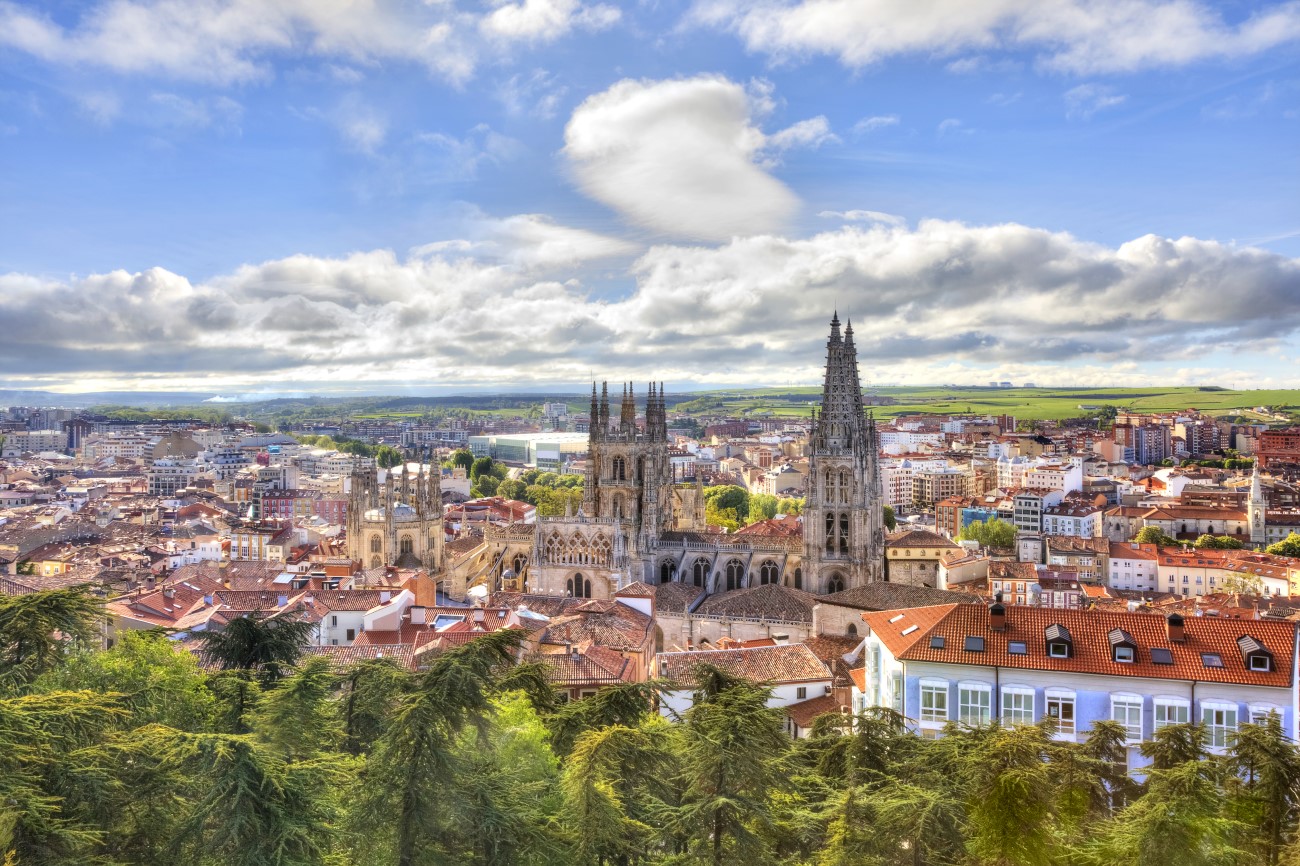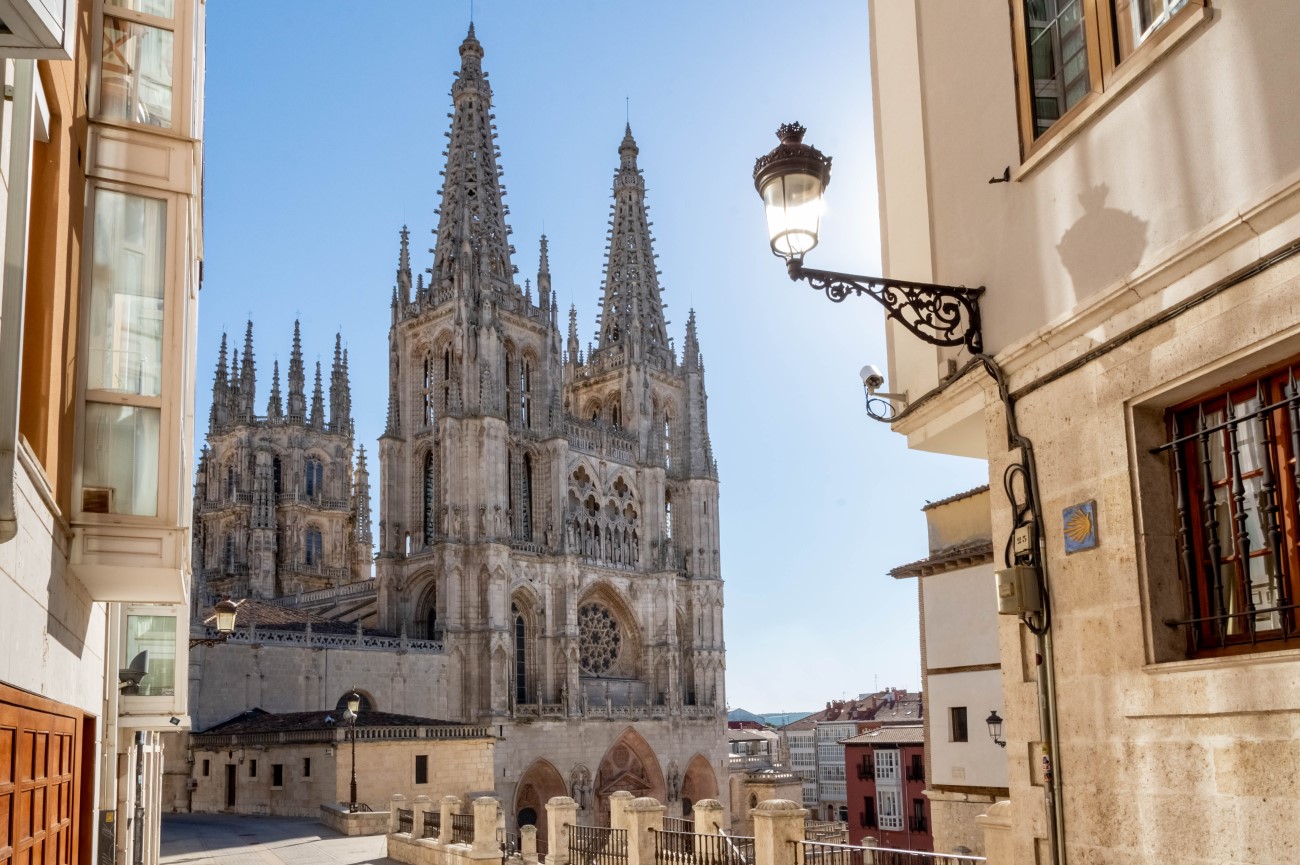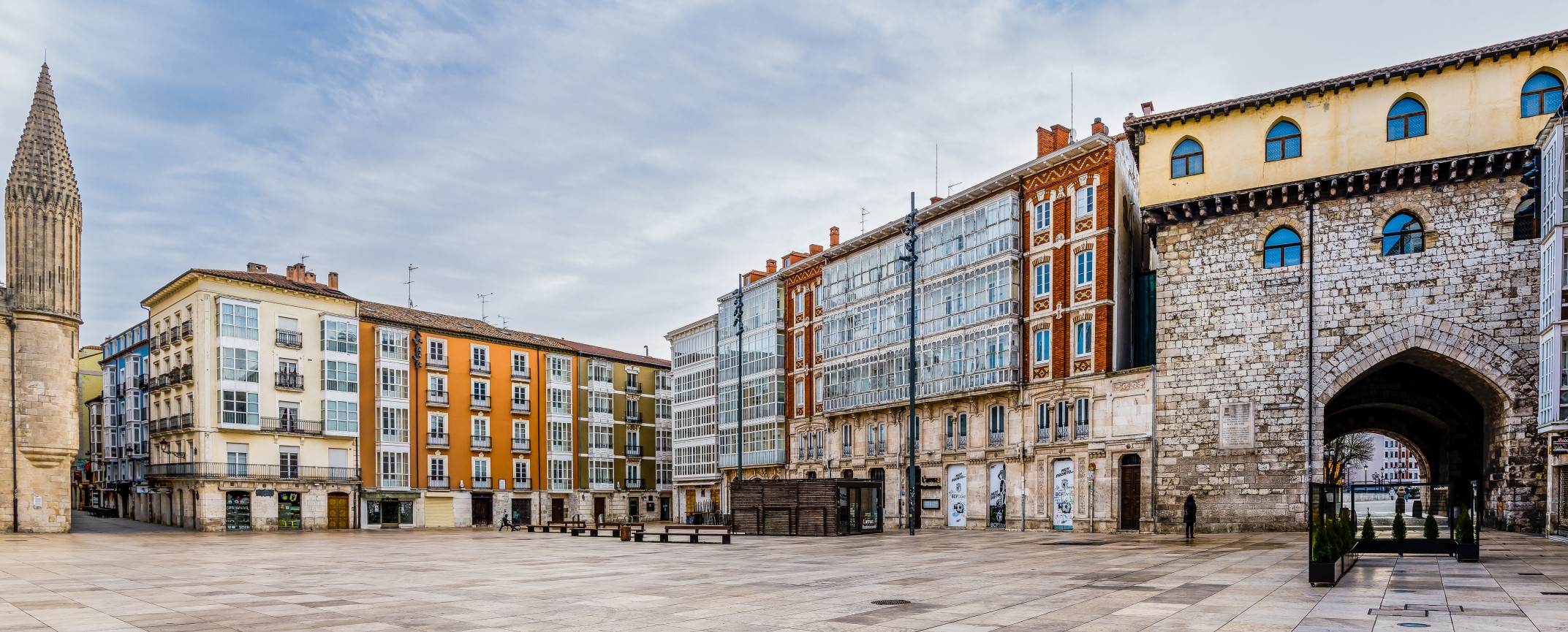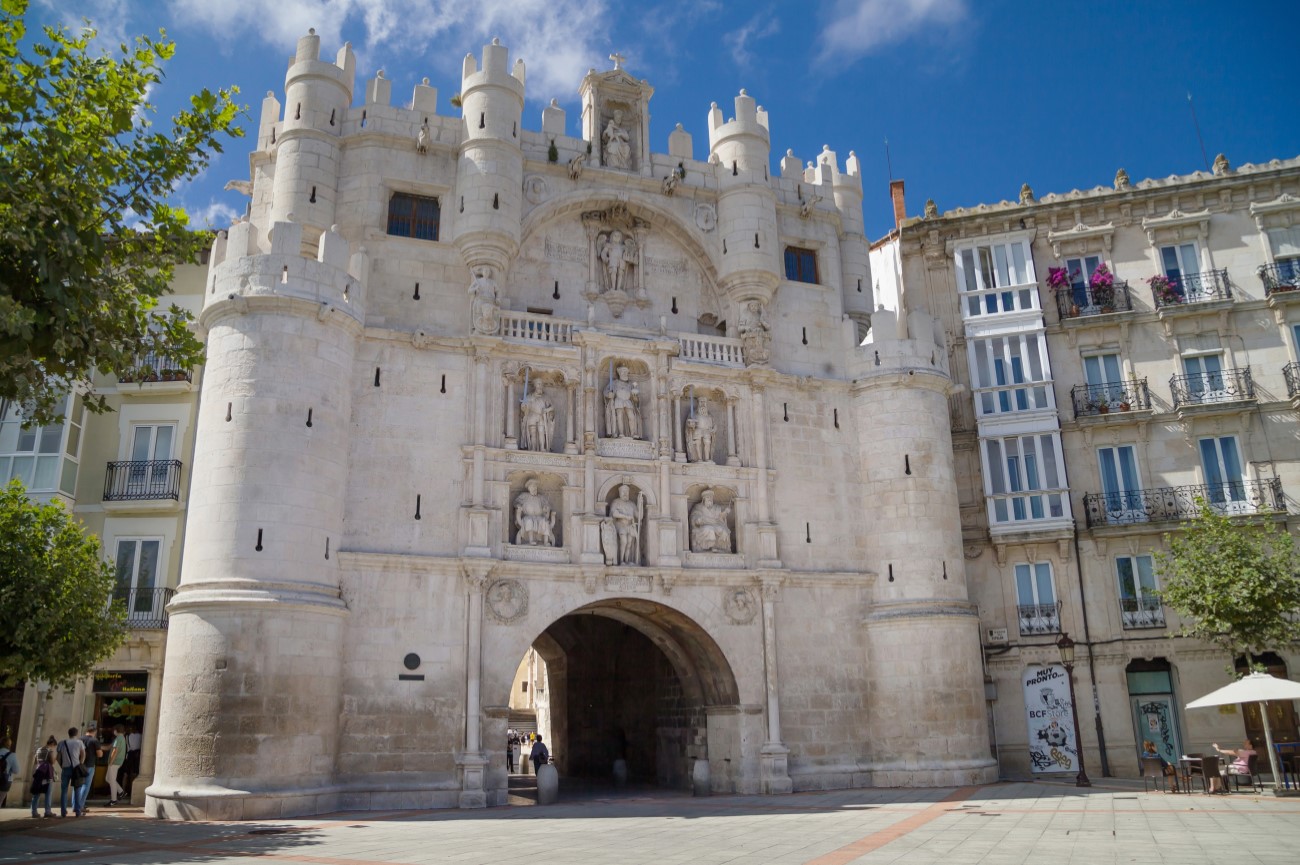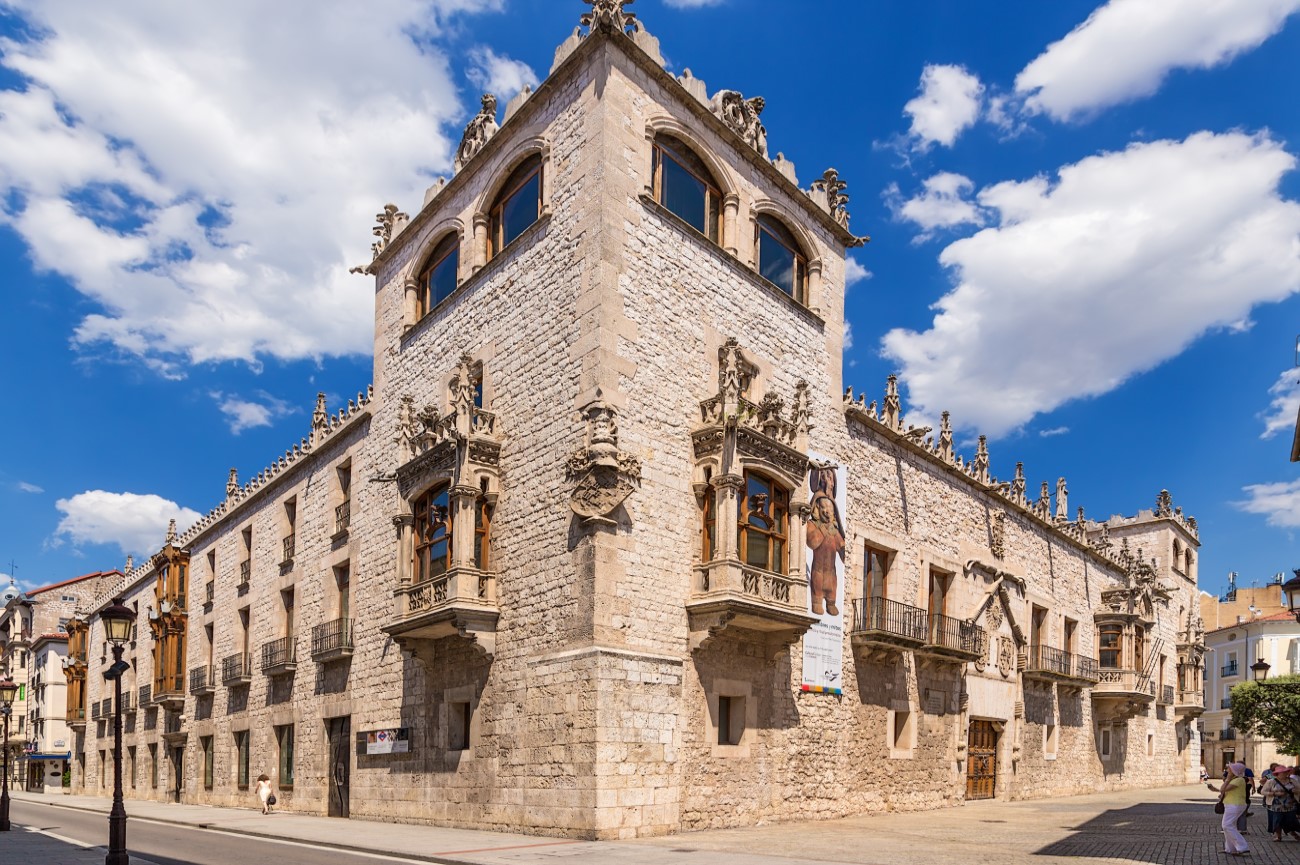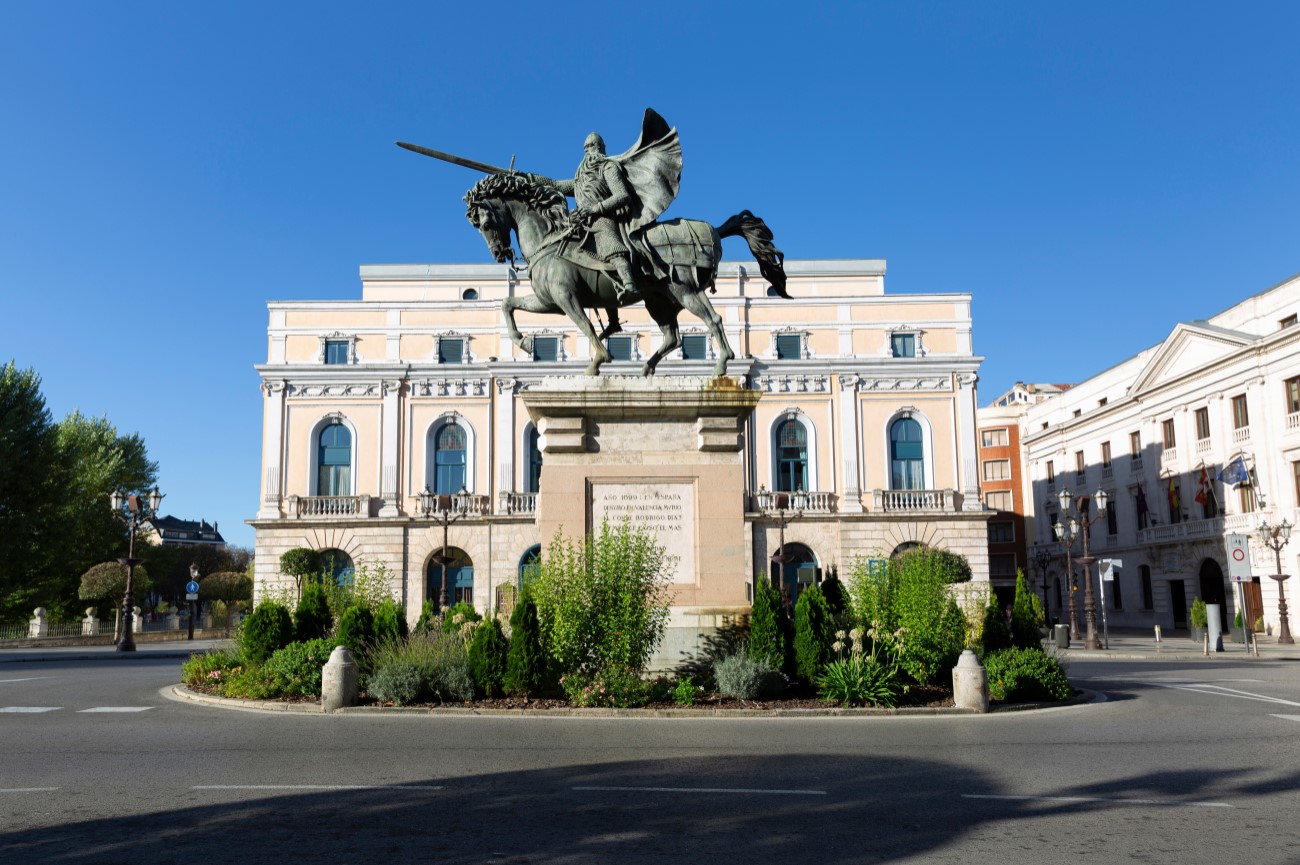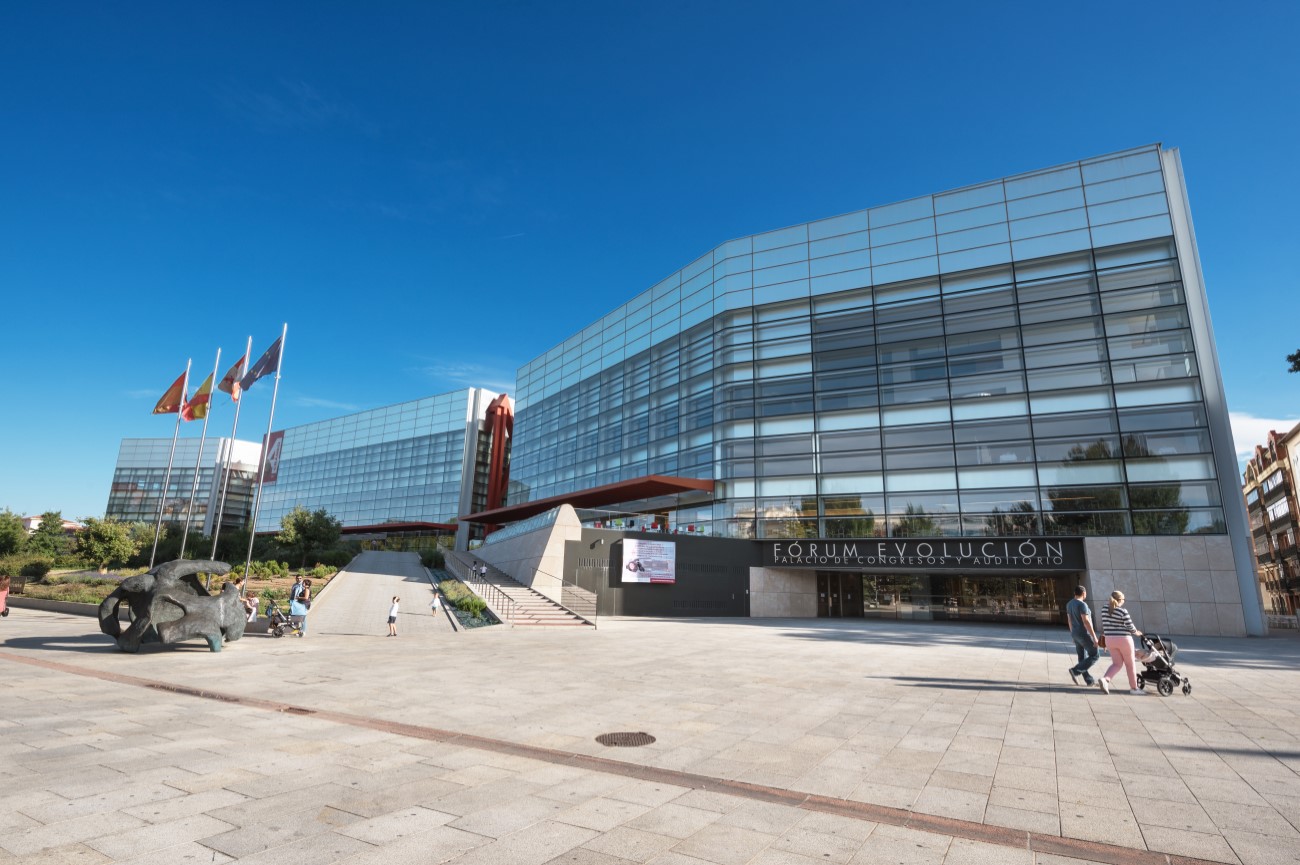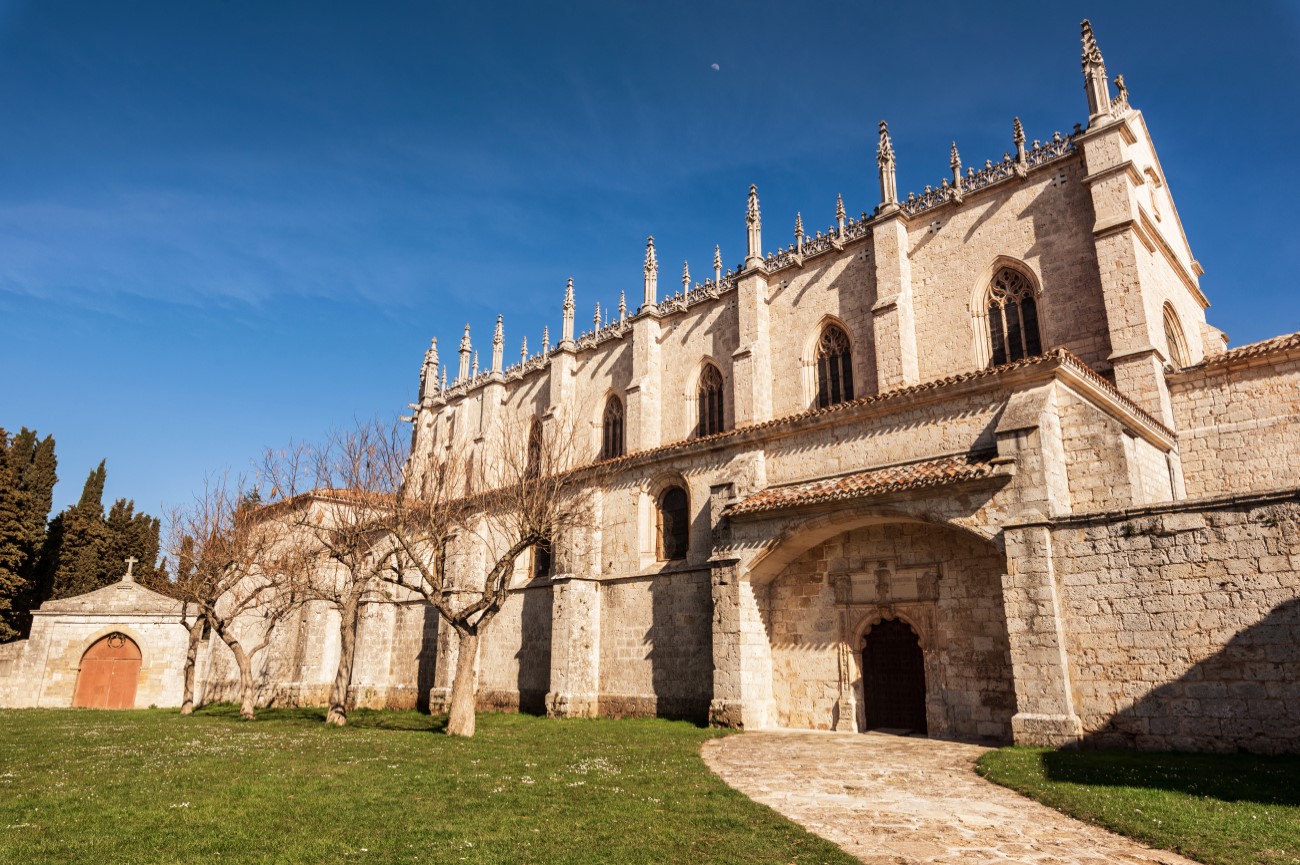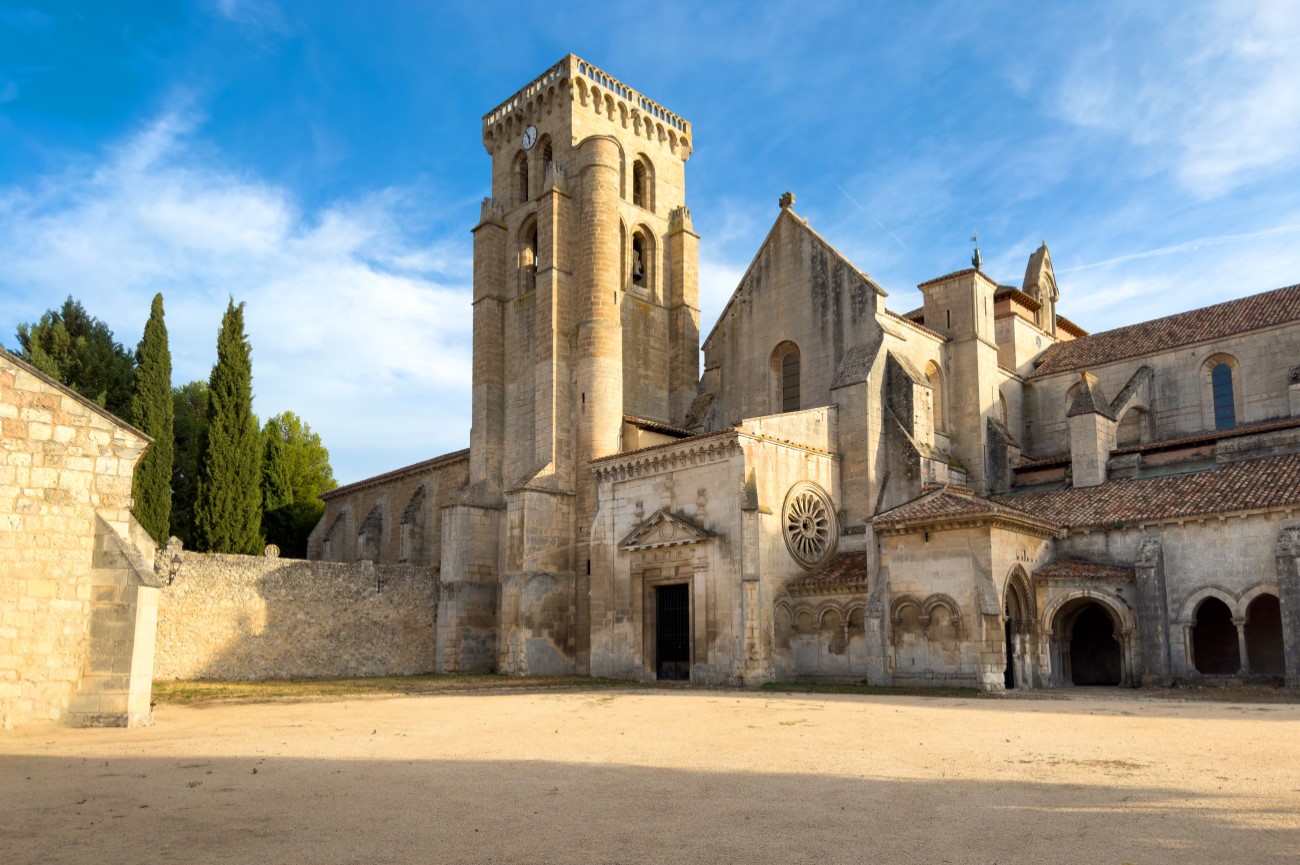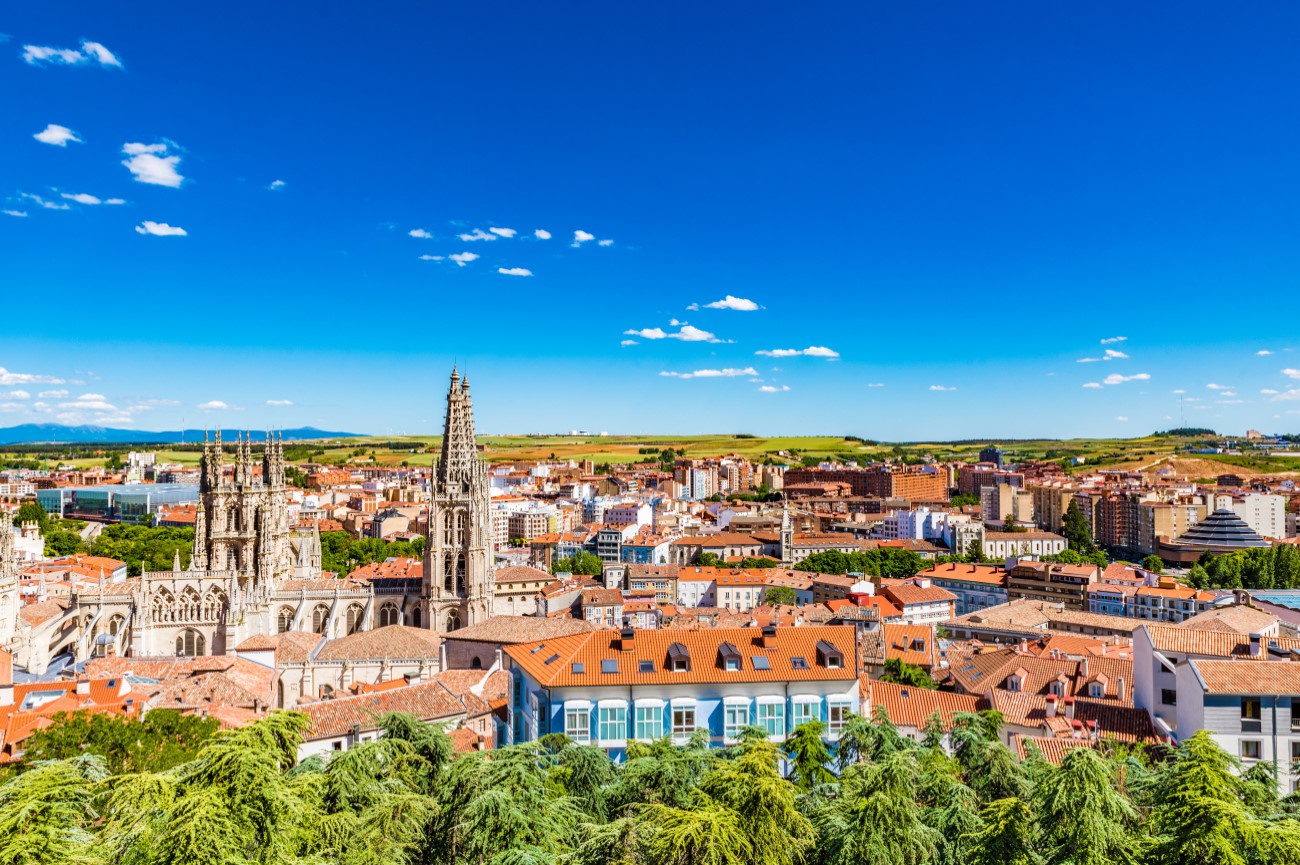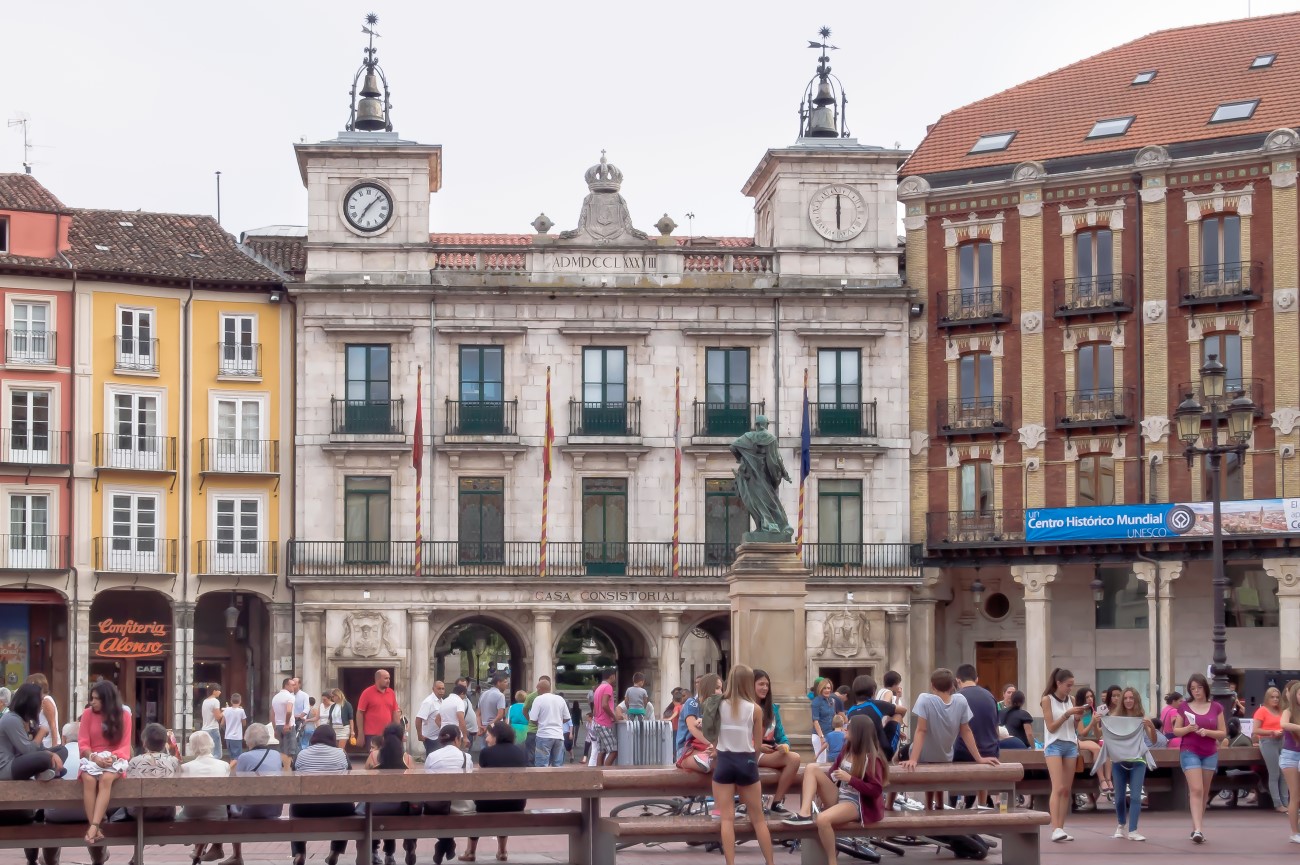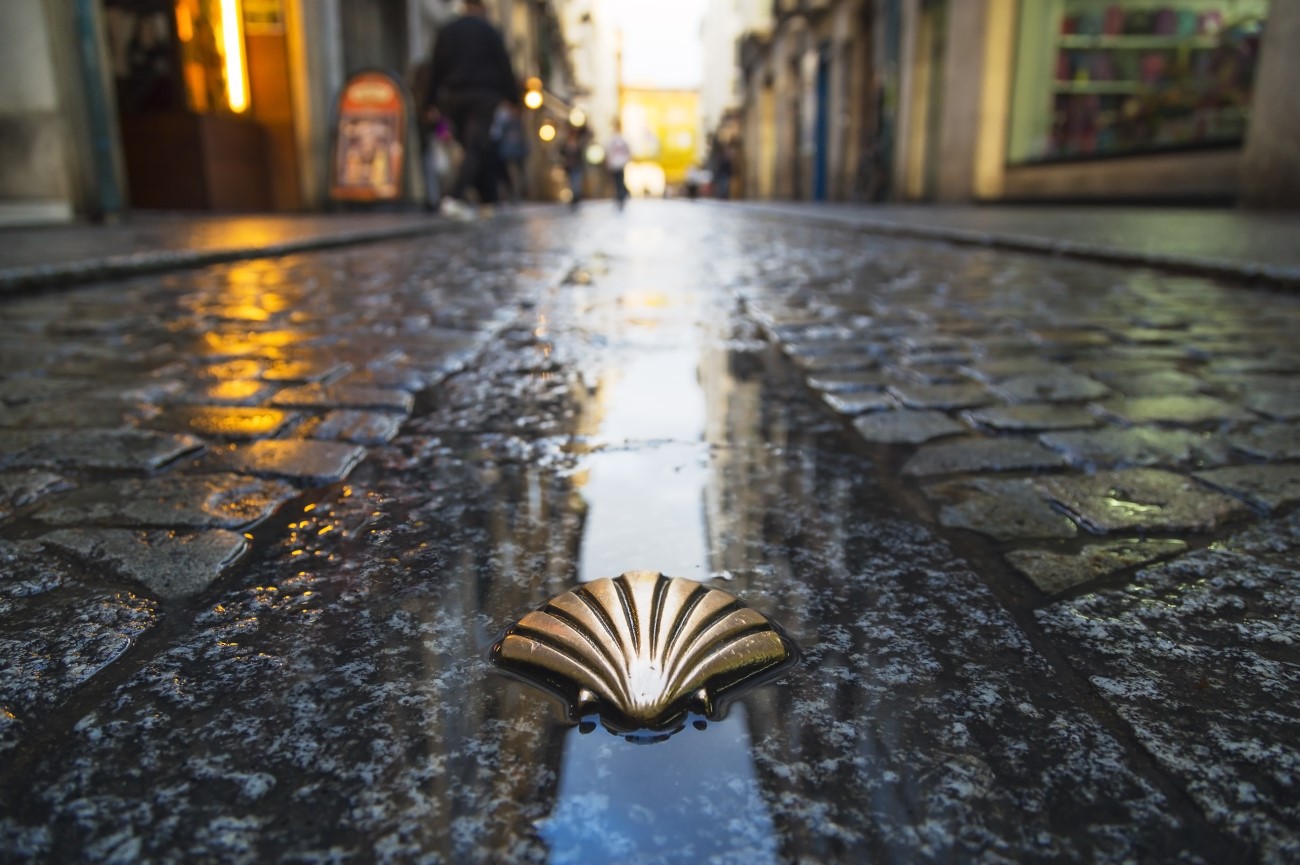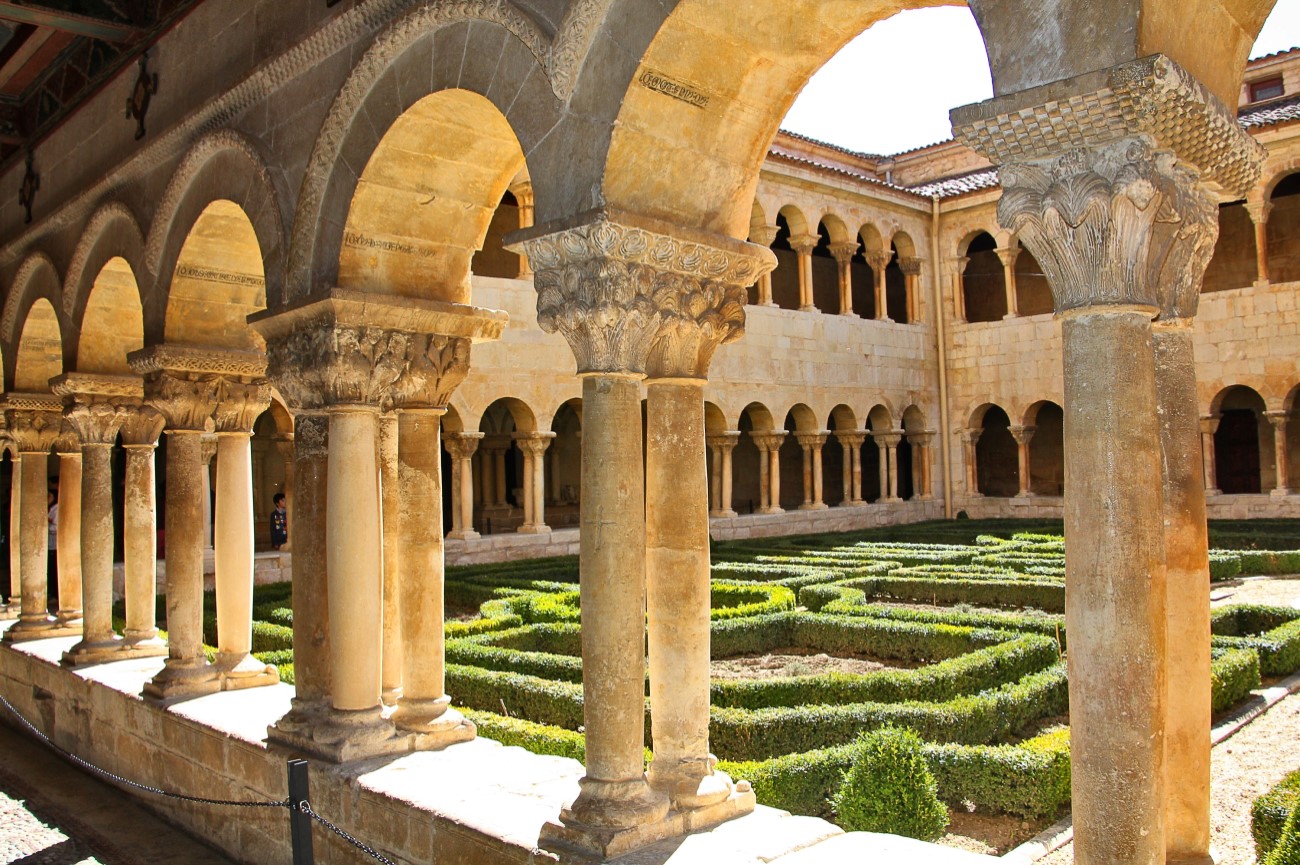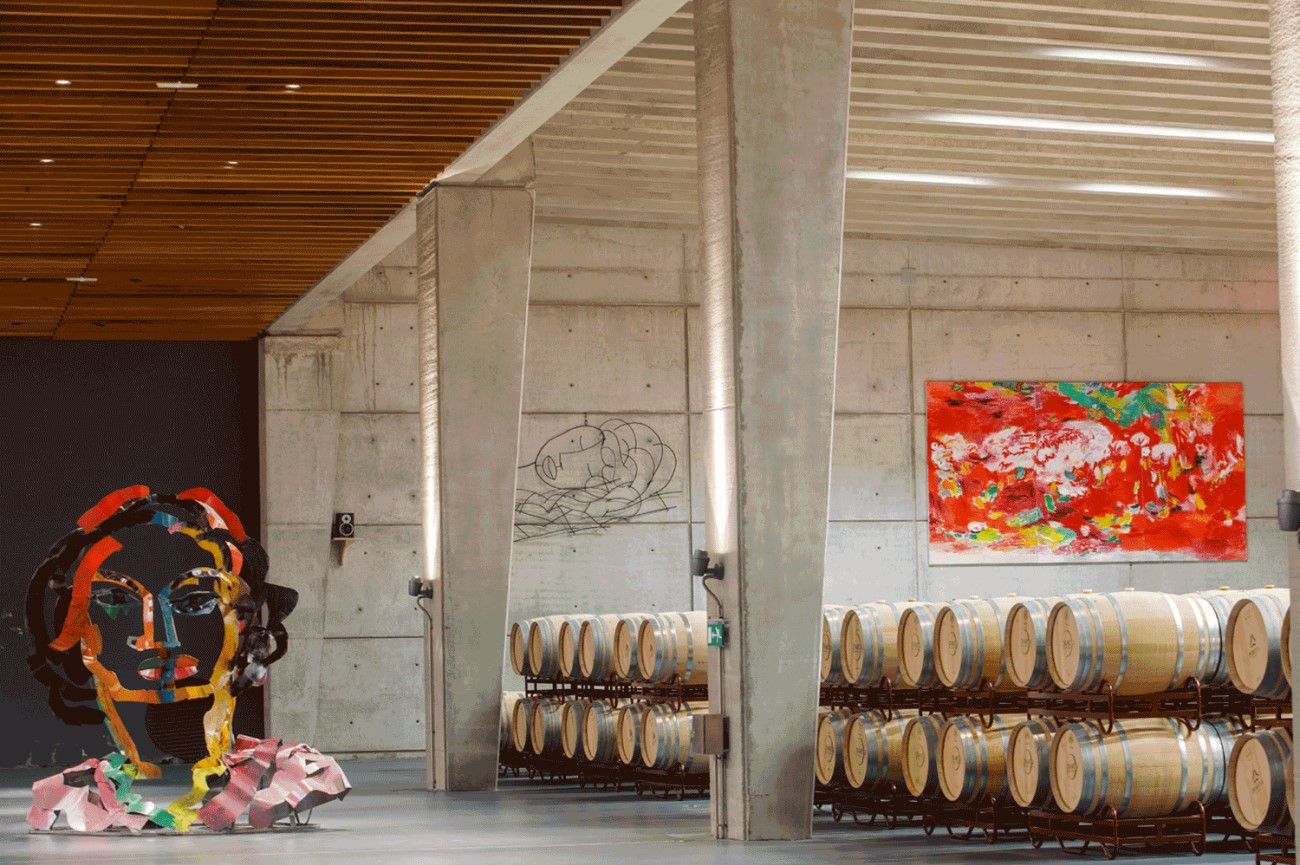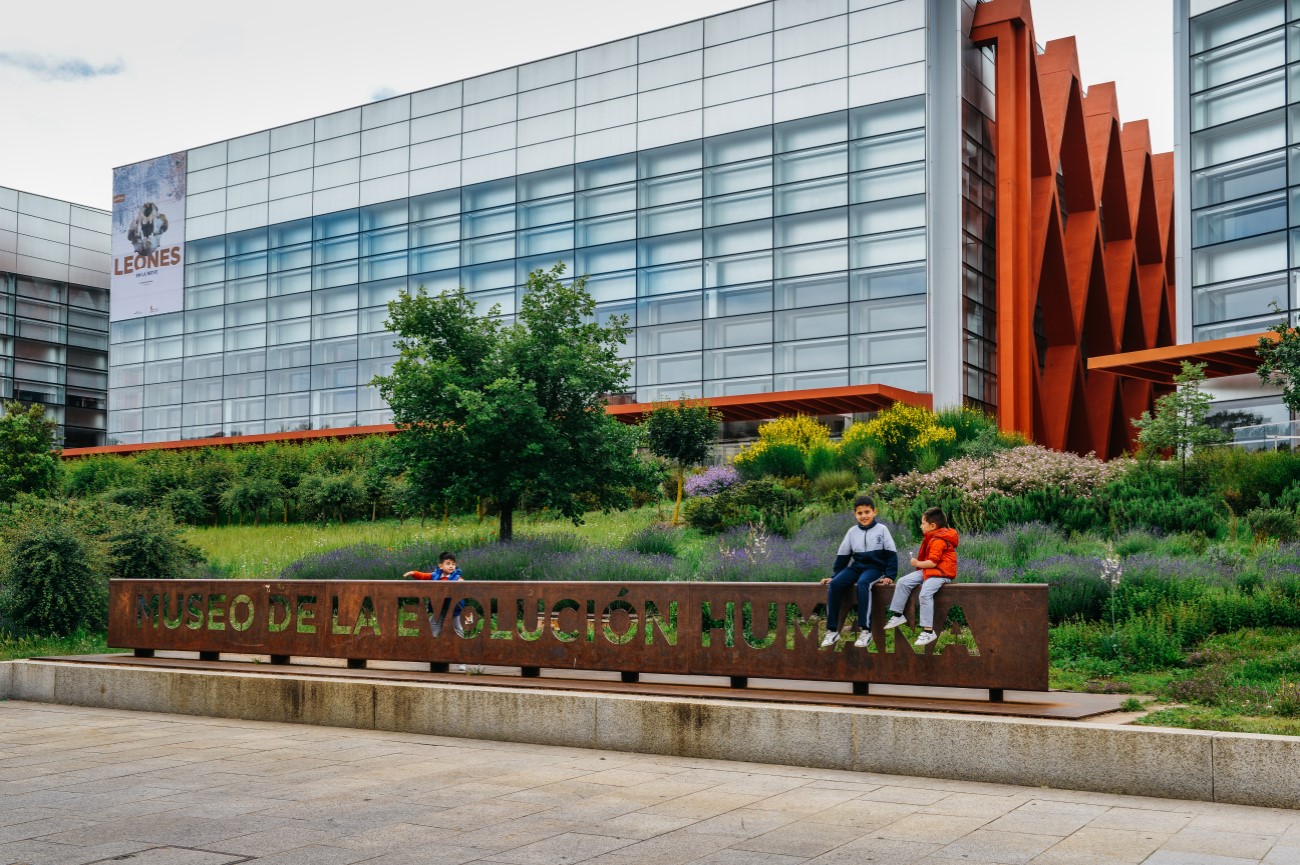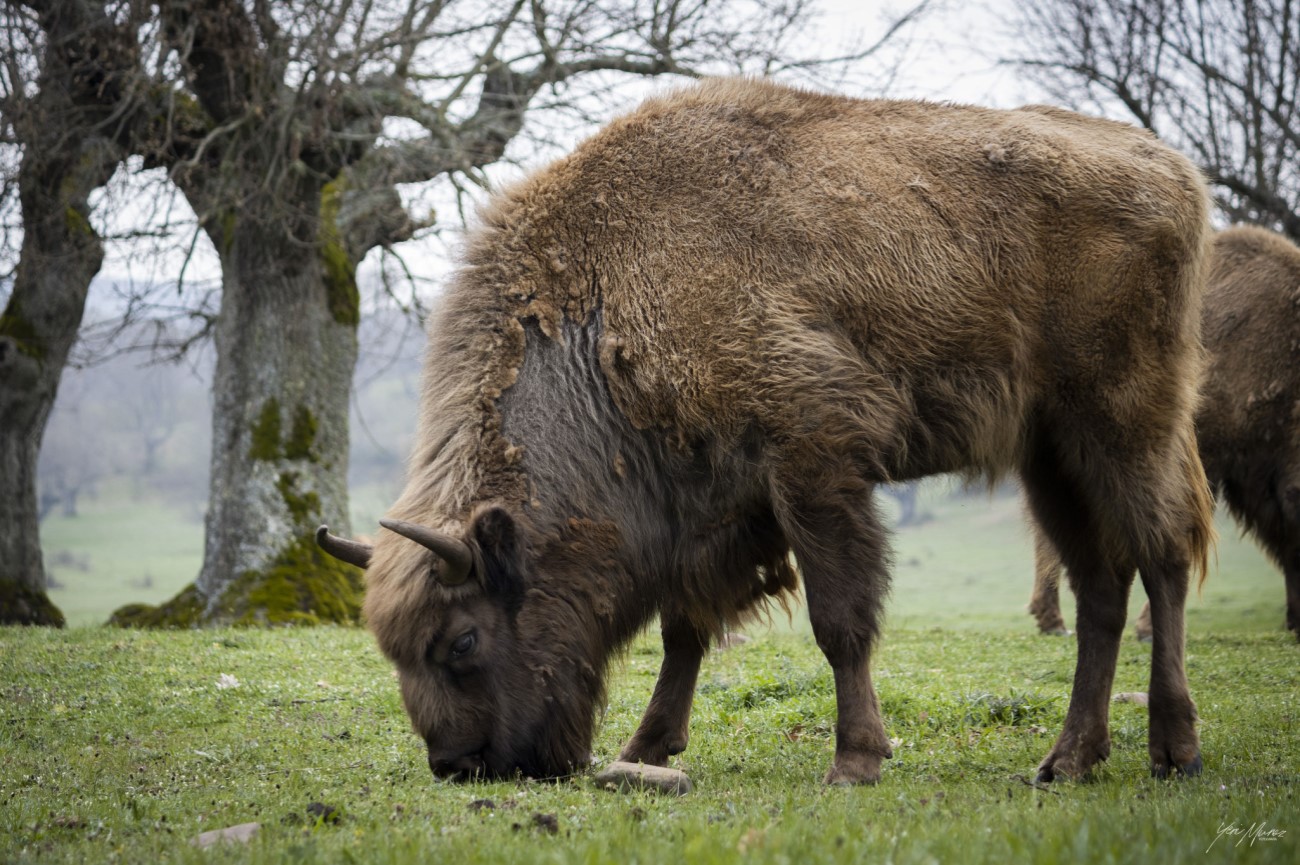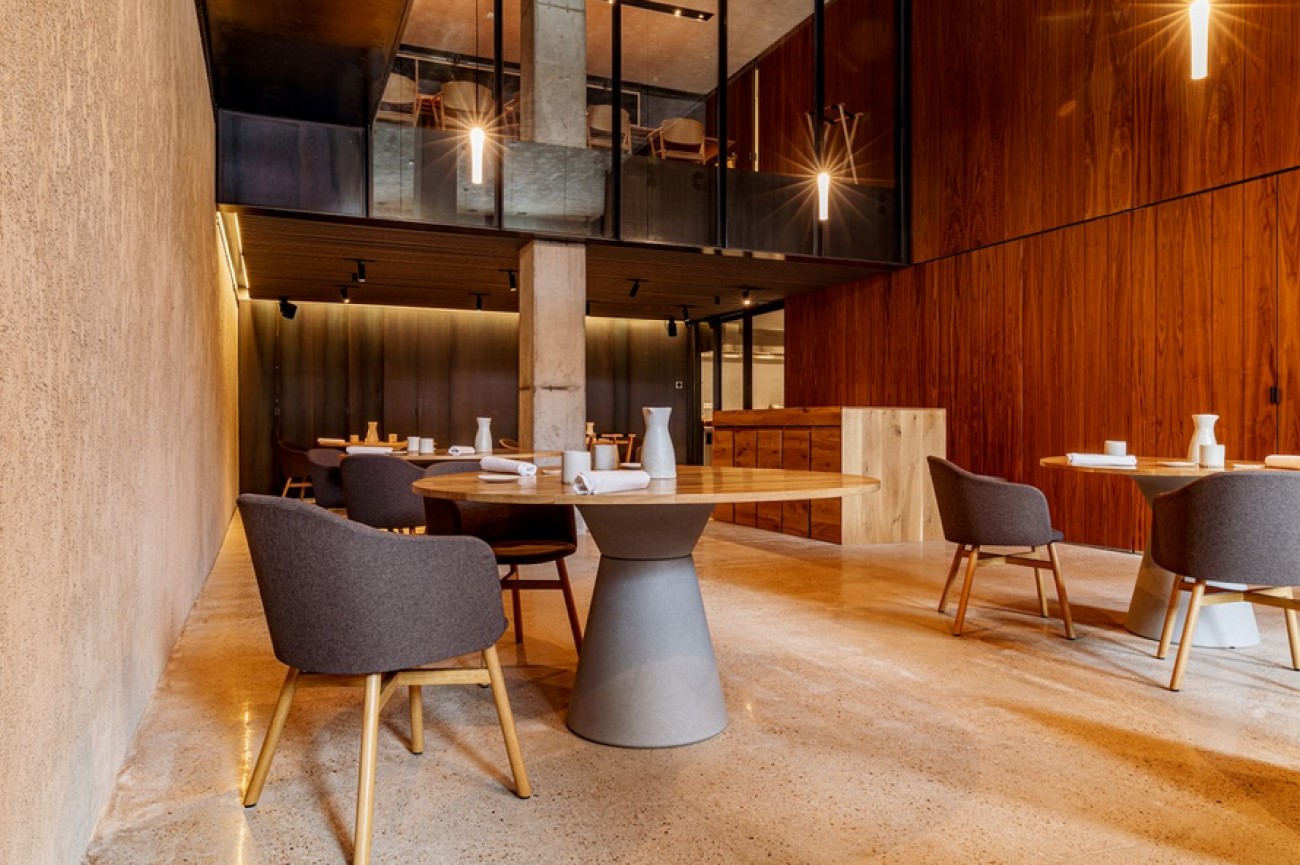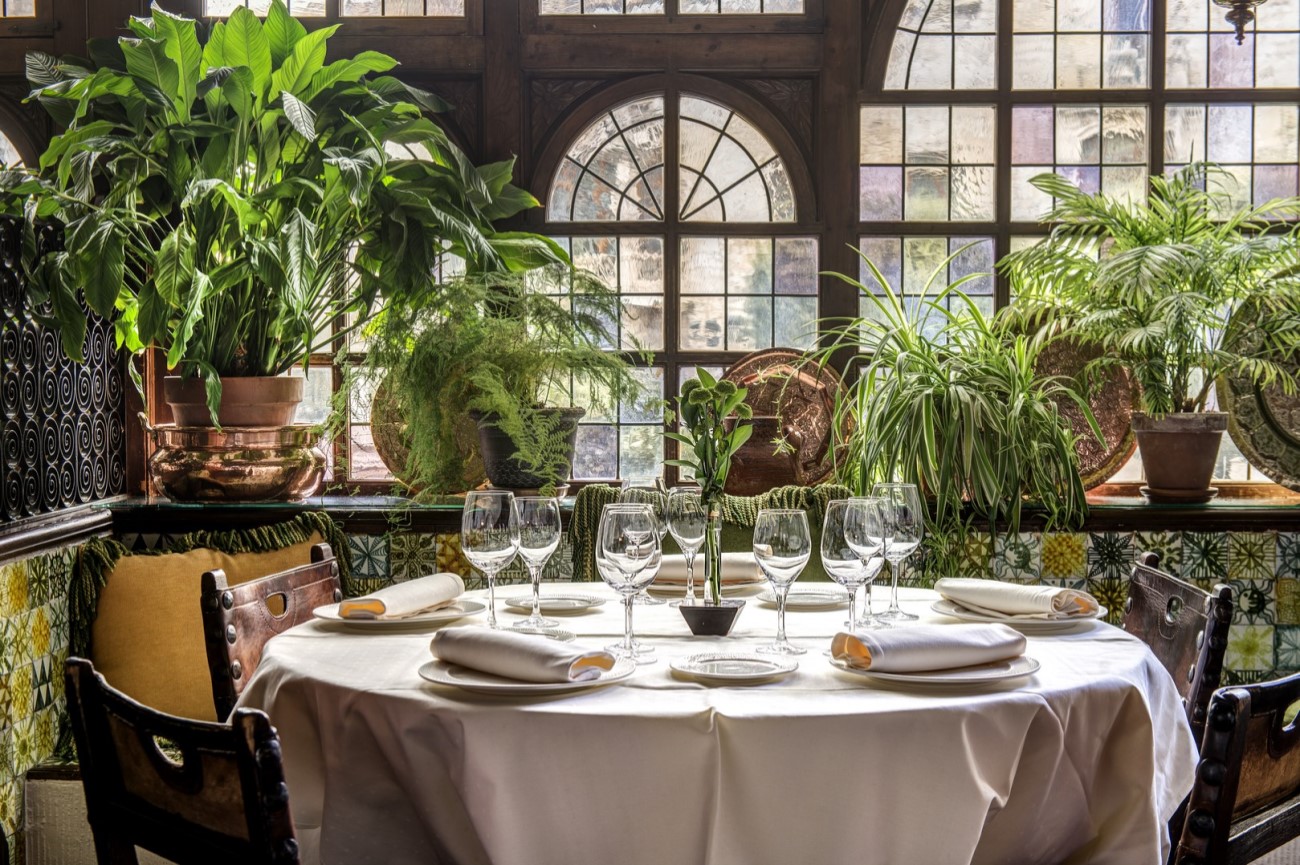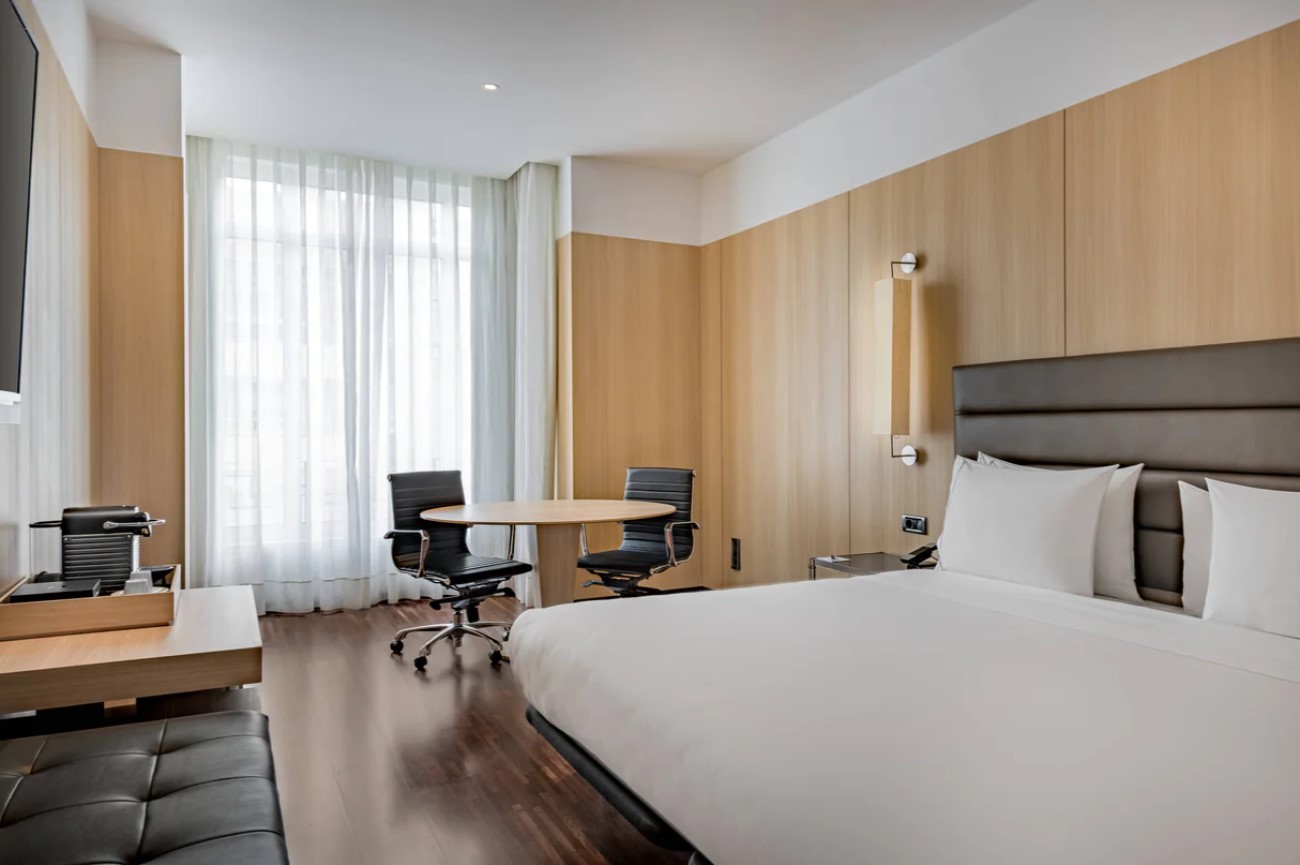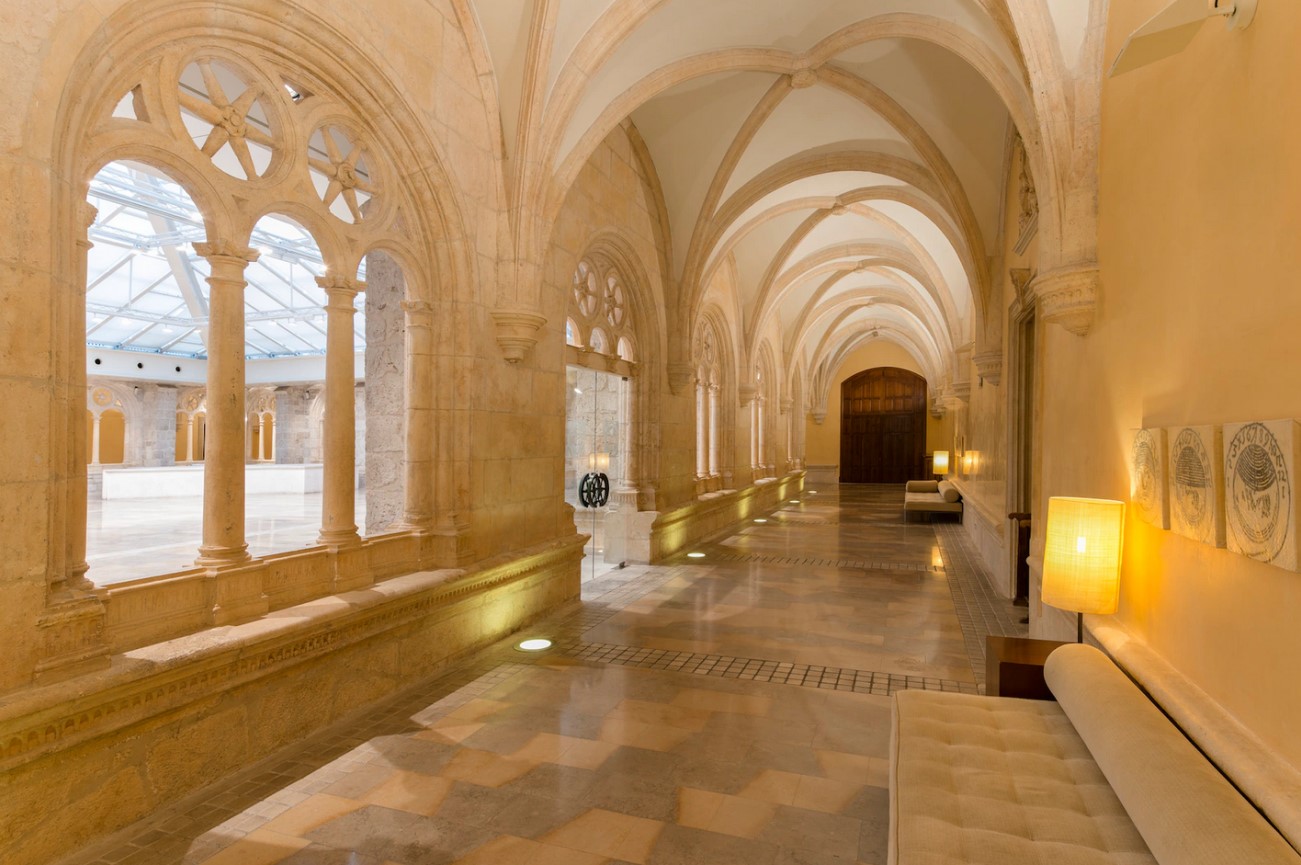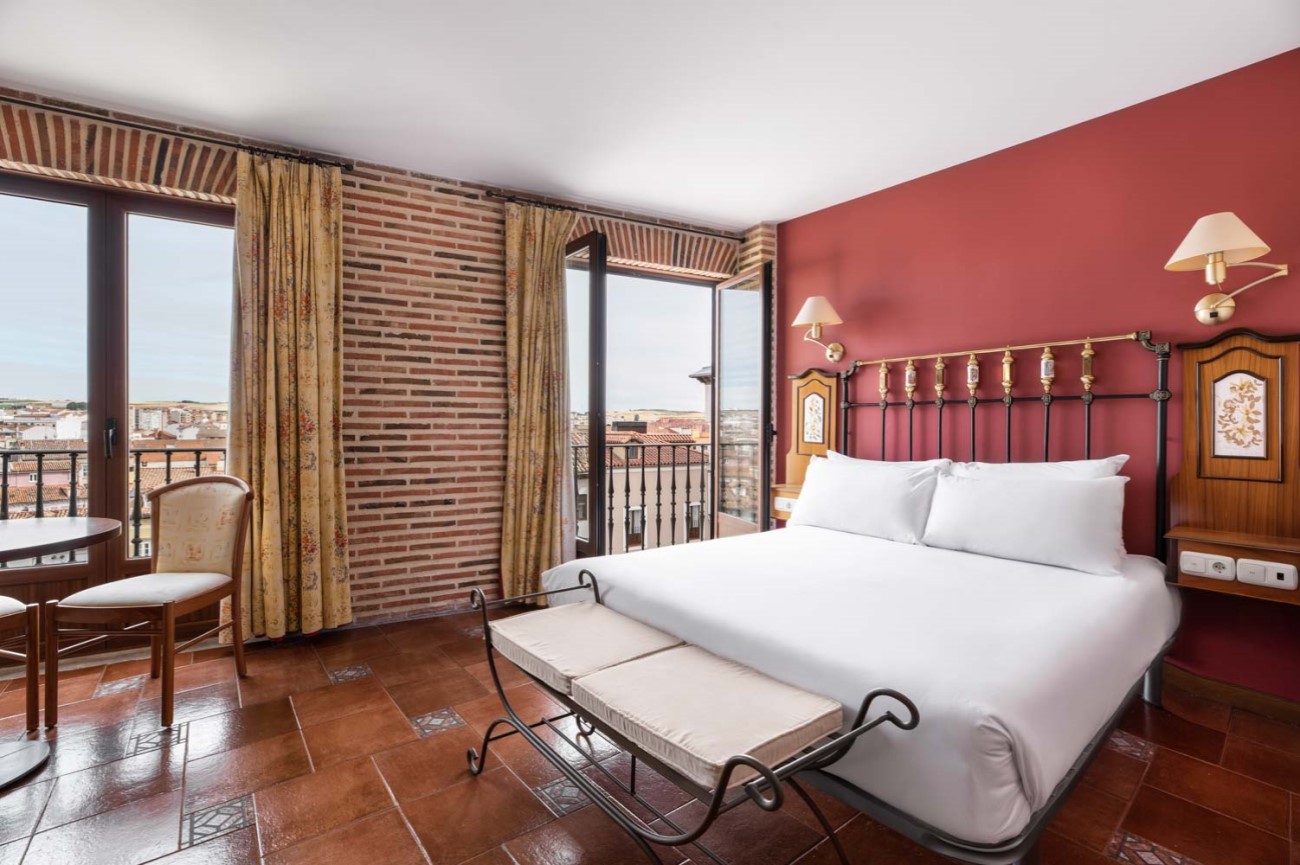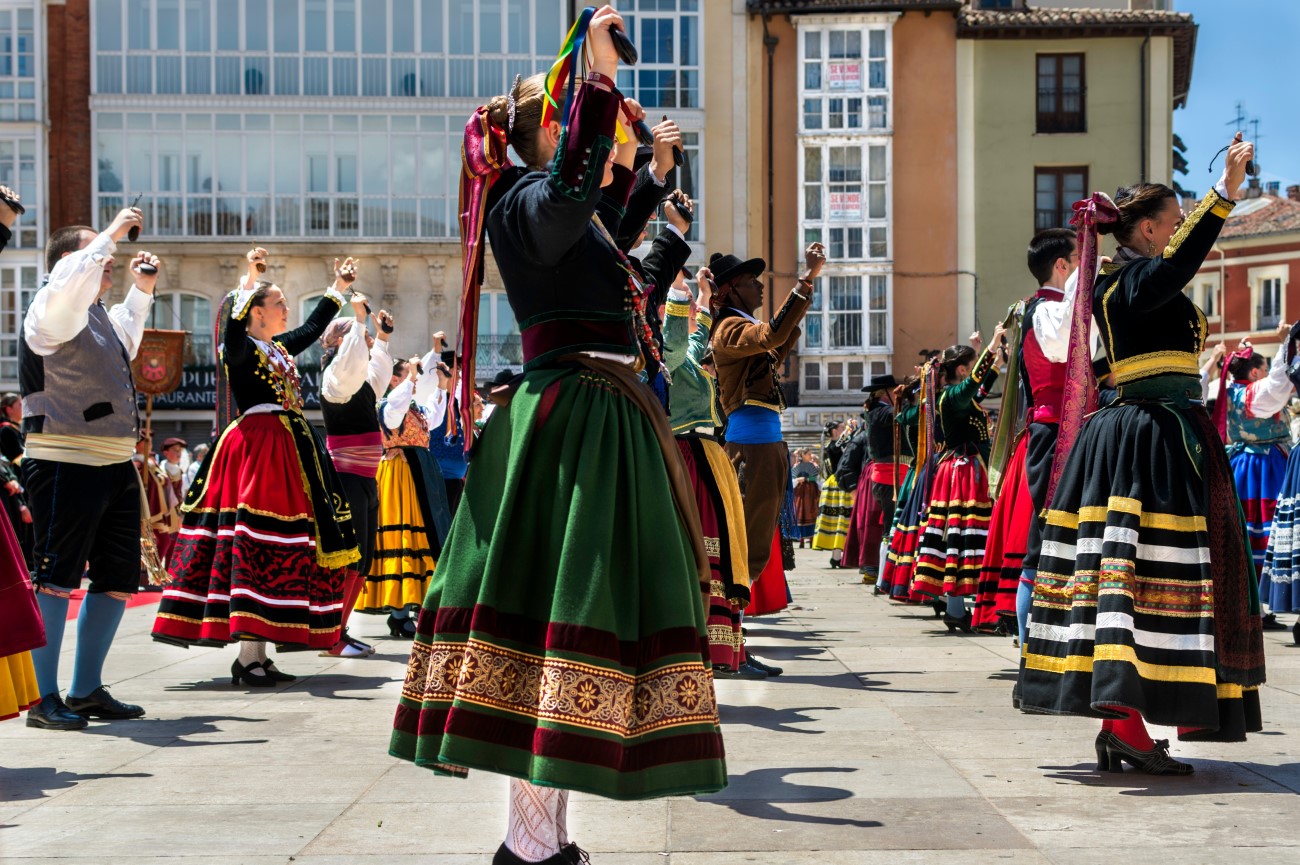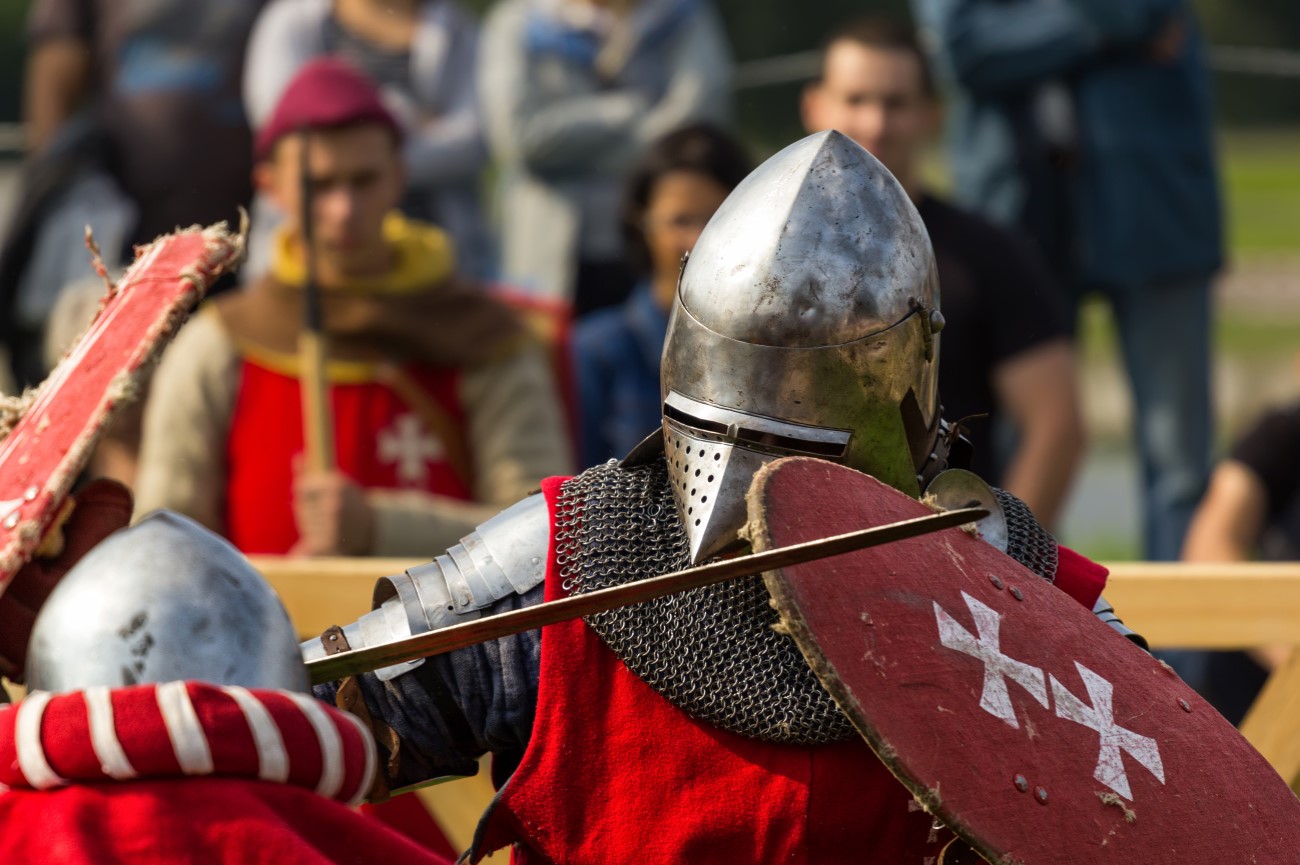Things to do in Burgos, Spain - 2-day itinerary
Burgos is the official capital of the Castile and León region. Like many northern Spanish cities, it offers the typical dark-stone buildings and hearty cuisine. Among its iconic landmarks is a French Gothic Cathedral. The city is one of the many stops on the Camino de Santiago, attracting thousands of pilgrims every year.
Our three-day itinerary features the best things to do in Burgos, from medieval churches and castles to museums and lively squares. We've also included suggestions on where to stay and eat while you're in town.
Day 1

Morning: Catedral de Burgos
Our journey begins with a tour of the Catedral de Burgos. This Unesco World Heritage Site took 40 years to be completed. Construction began in 1221 and only finished in 1261. What started as a simple Romanesque structure is now recognised as a French Gothic site. Entering from Plaza de Santa Maria, you can visit the Capilla de Santísimo Cristo with its 13th-century crucifix and the Capilla de Santa Tecla, which presents a striking ceiling. But it's worth exploring the whole cathedral, stopping to admire the stunning altar with its golden details and the star-vaulted dome beneath which lies the tomb of El Cid, a military leader from the medieval times praised as a hero in this region. The attached Museo Catedralicio features a collection of oil paintings, tapestries and other religious items.
Plaza de St. Maria
After visiting the cathedral, exit through Plaza
de Santa Maria and turn around to capture the cathedral's infamous
towers. These two structures follow a similar style to the cathedrals in
Paris and Reims. Still in the square is the Fuente de Santa Maria, one
of the oldest fountains in Burgos, dating back to 1395.
Iglesia de San Nicolás de Bari
Just around the corner from the square is the Iglesia de San Nicolás de Bari, a 15th-century church considered a jewel of Gothic architecture. It was in ruins for a while, but in 1911 a restoration project brought the church to its full glory. Its main attraction is the splendid Castilian renaissance altarpiece full of ornate carvings. This masterpiece was created by the Colonia workshop, which also designed many other monuments around Burgos. Other highlights include the gothic tombs of the Polanco family, who paid for much of the church's interior design, and the Flemish tapestries featured in the adjoining museum.
Arco de Santa María
Continue your walk towards the Arco de Santa María. Part of the 14th-century walls, this was once the main gate to the old city. Temporary exhibits are held inside sometimes, but the building itself is worth the capture with its ornate facade filled with statues of kings and noblemen. The gate connects to the Santa María bridge.
Afternoon: Paseo del Espolón
Known as “El salón de la ciudad”, this walkway along the north bank of the Arlanzón river is the perfect spot for a peaceful stroll along the city. The path lined with trees, 19th-century iron gas lamps and sculptures draws locals every day, who come here to exercise or relax in one of the many cafes dotted around.
Casa Del Cordón
The next stop is the Plaza de La Libertad. In this charming square lies a 15th-century palace built for the High Constable of Castile. It was here that the Catholic Monarchs, Fernando II and Isabel I, welcomed Christopher Columbus on his return from his second voyage to the Americas in 1497. Today, the Casa del Cordón is home to a bank and an exhibition space.
Plaza Mío Cid
Take a stroll down the Plaza Mío Cid, where you can admire the statue of Spanish hero El Cid and continue to the Puente de San Pablo to capture the river and its lush surroundings.
Museum of Human Evolution
Cross over to the other margin and head to the Museum of Human Evolution, one of the most impressive museums in the city. Here you can learn everything about human evolution, starting with the basement exhibition on Atapuerca, an archaeological site north of Burgos where they discovered Europe’s oldest human fossil. There is also a section on Charles Darwin and his research work. You can easily spend an hour here.
Cartuja de Miraflores
Our last stop is the Miraflores Charterhouse, located 4km east of the city centre. To get here, you can either follow the promenade along the Rio Arlanzón, which takes around one hour, or hop on a taxi. Before it became a monastery, this was a hunting site for King Juan II. Since the 15th century, it is occupied by monks. Inside, you can find many Gothic and Renaissance elements like the gilded altar, featuring gold of the first shipments from America, and the carved tombs of Juan II and Isabel of Portugal.
Day 1 - Burgos Tour Map
DAY 2

Morning: Burgos Museum
To learn more about the city's history, it's worth visiting the Burgos Museum. Housed in a 16th-century mansion, it displays exhibits about prehistory and archaeology, covering artefacts found in Burgos and the Castile and León region. Human fossils of the Trinchera, Gothic tombs and remains of the Roman city of Clunia are some of the highlights of this museum. You'll also find several rooms with pre-Romanesque and contemporary art.
Monasterio de Santa María la Real de Las Huelgas
About thirty minutes walk from the museum is the Monasterio de las Huelgas, one of the most notorious monasteries in Spain. Founded in 1187 by Eleanor of Aquitaine, daughter of Henry II of England and wife of Alfonso VIII of Castilla, this monastery is still home to around 30 Cistercian nuns. You can only access it through a guided tour. Schedules change every season, so make sure to call ahead to confirm. Inside is the Museo de Ricas Telas, showcasing a collection of jewelled robes and royal garments. During the tour, you’ll also see the tombs of numerous kings and queens, a Romanesque cloister and a striking gilded Renaissance altar.
Afternoon: Burgos Castle
Return to the city centre and make your way to the Burgos Castle. The original building and foritifications are from the 9th century, but it went through several renovations following a fire in 1736 and a Napeolonic attack in 1813. There's a small museum inside with exhibits about Burgos history.
Mirador del Castillo
A few steps from the castle is the Mirador del
Castillo. It's a steep climb to get here, but the scenic city views make
up for it. Standing here, you can capture the cathedral and many other
iconic buildings. If you're not up for the hike, you can also reach the
viewpoint by car.
Plaza Mayor
End the day at Plaza Mayor, the heart of the city. This central square is busy from morning until dawn. The surrounding streets are packed with bars where you can stop for tapas and wine. Many pilgrims rest here, taking a break from the Camino de Santiago. In the summer, don't miss the Tinto de Verano, a mix of lemonade and wine served with plenty of ice.
Day 2 - Burgos Tour Map
Other things to do in Burgos:
Camino de Santiago: Burgos is often a rest point for thousands of pilgrims who follow the historical path leading to the Cathedral of Santiago de Compostela. The route into the city passes through an industrial area, so it is not the most scenic, but the section towards León takes you along rolling wheat fields. The route is signposted with the famous scallop shell.
Monasterio de Santo Domingo de Silos: This impressive Benedictine monastery was built in the 7th century and is one of the region's landmarks. It is about one hour away from Burgos. Guided tours are often given by one of the monks who live here. If you’re lucky, you might catch them performing their famous Gregorian chants.
Bodegas Portia: Burgos is part of the Ribera del Duero wine route. Here you can visit one of the local wineries like Bodegas Portia. The building itself is worth a look as it was designed by the British architect Norman Foster. During the tour you’ll get to know their modern winemaking process. The visit ends with a tasting session where you can try some of the bodega’s specialities paired with a few tapas.
Top things to do with kids in Burgos
Burgos offers a few family-friendly attractions. Kids will enjoy
exploring the town’s castle or taking a walk along the riverfront
promenade known as the Paseo del Espolón. There are also a few
interactive museums like the Museum of Human Evolution, where they can
see some of the oldest fossils in Europe.
On the outskirts of town is the Paleolítico Vivo, a wildlife park that offers walking routes and safari tours. Here you can spot rare species like the European bison and the Przewalski horse.
Where to eat in Burgos
Burgos is the perfect place to sample a range of Castilian dishes. The city is renowned for its meat dishes. Among them is the morcilla, a type of blood sausage made with pig’s blood, butter, rice and onion, often served as a tapa. There’s also the cordero lechal (suckling lamb) and chuletillas de cordero (lamb chops). Other regional treats include sheep cheese, cangrejos de río (river crabs) and vegetables like lentils and alubias rojas (red beans). For dessert, don’t miss the postre del abuelo, made with Burgos cheese, honey and walnuts. Below are some of the best places to eat in Burgos:
- Cobo Tradición: Chef Miguel Cobo is behind this innovative restaurant giving a creative spin to classic Spanish dishes like stews and preserves.
- La Fábrica: Run by local chef Ricardo Temiño, this farm-to-table restaurant focuses on seasonal ingredients. It offers a mix of meat and fish dishes, with set menus and half portions available.
- La Favorita: This cosy tapas bar stands out with its exposed wooden beams and stone walls. It’s famous for its grilled meat dishes cooked on the coals. The house wines are also worth the try.
- Casa Ojeda: Founded in 1912, this traditional restaurant is a classic dining spot in Burgos, renowned for its roast lamb dishes.
Where to stay in Burgos
- AC Hotel by Marriott Burgos (4 stars): Facing the Arlanzón River, this four-star hotel offers balconies with panoramic views. The striking whitewashed building is only a few steps from the Arco de Santa María. Guests have access to a fitness room and a lounge where meals and drinks are available throughout the day.
- Hotel NH Collection Palacio de Burgos (4 stars): Occupying a 16th-century Gothic palace, this luxury hotel combines modern and traditional elements. Rooms feature four-poster beds and hardwood floors. Other amenities include a restaurant, a bar and a gym.
- Crisol Mesón del Cid (3 stars): This affordable hotel offers a privileged location across the city’s cathedral. The rooms offer a classic decor with wooden furnishings, terracotta floors and wrought-iron beds. Some even feature views of the cathedral. There’s also a restaurant on-site where breakfast is served.
Best time to visit Burgos
The best time to visit Burgos is between June and October. During this period, you'll have warm climate and practically no precipitation. During the summer, the maximum temperature is around 30ºC during the day and 20ºC at night. In winter, temperatures drop significantly, sometimes going as low as -10°C in the evenings.
Burgos Festivals
- Easter Week: Easter Week is one of the most popular festivals in Burgos. During this time, a series of religious brotherhoods parade through the city. The celebrations start on Friday of Sorrows with a torch-lit penitential rosary. Then comes Passion Saturday with the Announcement and Proclamation of Easter Week and Palm Sunday with the borriquita (little donkey) procession. On Holy Monday, the Stations of the Cross are celebrated at twilight, departing from San Esteban Church towards the castle.
- Burgos International Folk Festival: During the third week of July, Burgos welcomes the International Folk Festival. The city invites several folk groups and performers from Spanish-speaking countries. Festivities take over the city's squares, and include workshops, parades, live music and street food.
- Burgos Cidiano: Between late September and early October, Burgos returns to the 11th-century, transforming itself into a medieval stage. Expect parades, markets and historical re-enactments, paying homage to the iconic Spanish hero, El Cid. Visitors are free to visit and join the several workshops related to the Middle Ages.


